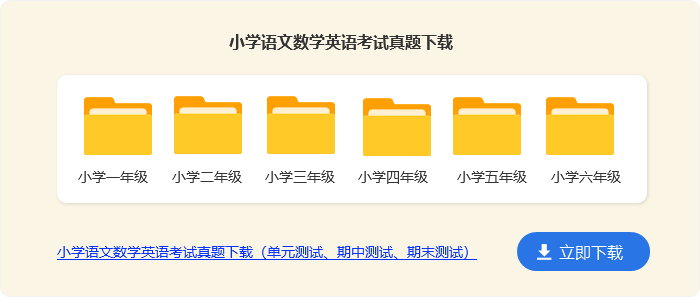
- 相关推荐
小学语法总结
总结是在某一特定时间段对学习和工作生活或其完成情况,包括取得的成绩、存在的问题及得到的经验和教训加以回顾和分析的书面材料,它可使零星的、肤浅的、表面的感性认知上升到全面的、系统的、本质的理性认识上来,是时候写一份总结了。总结怎么写才能发挥它的作用呢?以下是小编整理的小学语法总结,希望能够帮助到大家。

Unit 1
1. the first day 第一天
2. the new term 新学期
3. all the students 所有学生
4. at school 在学校
5. each other 互相
6. a new building 一幢新教学楼
7. a lot of rooms 许多房间
8. how many 多少
9. two reading rooms两间阅览室
10. have a look 看一看
11. go and play 去玩
12. go and see. 去看看
13. go and have a look 看一看
14. a lot of flowers and trees 许多花和树
15. good idea 好主意
16. in the street 在街道上
17. on the plate 在盘子里
18. on the table 在桌子上
句子
1. Is there a garden in the school? No, there isn’t.
学校里有个花园吗?不,没有。
2. Is there a reading room near the playground? Yes, there is.
操场附近有个阅览室吗?是的。
3. Are there any bookcases near the window? No, there aren’t.
窗子附近有一些书橱吗?不,没有。
there any pictures on the desk? Yes, there are. 课桌上有一些图片吗?是的。
5. How many TV rooms are there in the building? There are four.
大楼里有几间电视房?有四间。
6. I’m not sure.我不能确定。
Unit 2
1. my parents 我的父母
2. live in a new house 住在新房子里
3. near her school 在她的学校旁边
4. very much 非常
5. a large sitting-room 一个大客厅
6. in your bedroom 在你的卧室
7. some dolls 一些洋娃娃
8. a map of the world 一张世界地图
9. on the wall 在墙上
10. behind the door 在门后面
11. in the cat’s mouth在猫的嘴里
12. look happy 看上去高兴
13. in the afternoon 在下午
14. in the music room 在音乐室里
15. near the bed 在床边
16. on the desk 在桌上
17. in Picture 1 在图片1
18. the rabbit in the black hat 带着黑帽子的那只兔子
句子
1. What’s between the chairs? There’s a telephone between the chairs.
椅子中间有什么?椅子中间有个电话机。
2. What’s on the table? There are some glasses on the table.
桌子上有什么?桌子上有些玻璃杯。
isn’t a pencil on the desk. 课桌上没有一支铅笔。
aren’t any pictures on the wall. 墙上没有任何图片(复数)。
Unit 3
1. have a Music lesson 上音乐课
2. sing a song 唱一首歌
3. play the violin 拉小提琴
4. listen to 听
5. follow me 跟着我
6. sing it together 一起唱
7. make a puppet 做木偶
8. make a model plane 做模型飞机
小学生语法的知识点
情态动词
can; can’t; should; shouldn’t; must; may后一定加动词原形。
如:The girl can’t swim, but she can skate.
女孩不会游泳,但是会滑冰
Don’t talk in class, you should listen to the teacher carefully.
不要再课上说话,你应该认真听老师讲。
小学生语法重点句型
祈使句
肯定祈使句以动词原形开头;否定祈使句以don’t加动词原形开头。
如:Open the box for me ,please.
请为我打开盒子。
Liu Tao! Please get up earlier tomorrow.
刘涛,明天请早点起床!
Don’t walk on the grass!
不要在草地上走!
Helen! Don’t climb the tree,please.
海伦!不要爬树。
小学生形态句型参考
比较
than前用比较级;as…as之间用原级。
如:My mother is two years younger than my father.
我妈比我爸年轻两岁。
Liu Tao jumps as far as Ben.
刘涛跳得和本一样远。
一般疑问句及特殊疑问句
句子基本是:简单陈述句,由简单陈述句转变成肯定句,否定句,疑问句。疑问句是用来提出问题。英语中有四种疑问句: 一般疑问句、特殊疑问句、选择疑问句和反意疑问句。我们现在已经接触到了前两种疑问句。后两种疑问句以后我们还会学到.
一般疑问句:
英语中要用 yes和no 来回答的疑问句叫一般疑问句。如:
1)Is it hot ? Yes, it is .No, it isnt. -- be动词引导
2)Is it a car ? Yes, it is .No, it isnt . -- be动词引导
3)Is this your ruler ? Yes, it is .No, it isnt . -- be动词引导
4)Do you like bananas ? -- 含实义动词
Yes, I like bananas. No, I dont like bananas.
5)Can Ming hear a drill ? --含情态动词
Yes , Ming can hear a drill.No,Ming cant hear a drill.
陈述句(肯定句,否定句,一般疑问句)的转变规律:
1.肯定句: 2.否定句: 3. 一般疑问句及肯否定回答
1) 主语+be动词+…. 1) 主语+be动词+not+…. 1)be动词+主语+…?
Yes, 主语+be动词./
No, 主语+be动词+not.
I am a teacher. I am not a teacher. Are you a teacher?
--Yes, I am./ No, I am not.
My mother is thin. My mother is not /isnt thin. Is your mother thin?
--Yes, she is./ No, she isnt.
They are insects. They are not/arent insects. Are they insects?
--Yes. they are./ No, they arent.
2) 主语+情态动词can+… 2) 主语+情态动词can+ not+…. 2)情态动词can+主语+…?
Yes, 主语+情态动词can/
No,主语+情态动词can+ not
He can jump. He can not/cant jump. Can he jump?
--Yes,he can./ No, he cant.
3) 主语+动词+…. 3) 主语+助动词do/does+not 3) 助动词do/does+主语
+…. 动词原形 +….动词原形?
Yes, 主语+助动词do/does.
No, 主语+助动词do/does+not.
He likes to eat apples. He doesnt like to eat apples. Does he like to eat apples?
Yes,he does./ No,he doesnt.
We like to eat apples. We dont like to eat apples. Do you like to eat apples?
Yes,we do. /No,we dont.
二. 祈使句:表示请求、命令、建议或劝告等的句子叫祈使句,主语you常省略。
1、肯定形式:一般以动词原形开头。 Open the door, please.
2、否定形式:在句首谓语动词前加Dont。 Dont be late for class.
三 特殊疑问句(又叫wh-question)
用特殊疑问词来提出问题的疑问句叫作特殊疑问句。特殊疑问词一般要放在句首。常用的疑问词有what who ,which how 等这些词都以wh 开头(包括how)所以也叫作wh-question。特殊疑问句要求回答具体内容。不能用yes或no回答。结构:疑问词+一般疑问句。回答不能用yes / no(或相当于yes / no)回答的问句。答句的句式同肯定句句式:如:
What can you see ? I can see a cat.
What can you hear ? I can hear a bus.
What can you do ? I can sing and dance.
What is it ? Its a panda.
What do you like ? I like playing football
How old are you ? Im ten.
【小学语法总结】相关文章:
语法教学反思01-10
语文语法知识点归纳与总结04-23
初中英语语法的归纳总结:反身代词04-18
八年级语文下册语法知识点总结08-30
初中英语语法用法总结: 常用动词注意事项06-24
英语语法的教学反思(通用7篇)03-17
大学语法课心得体会(通用12篇)11-27
日语语法学习心得分享_心得体会11-01
小学总结开头11-24






